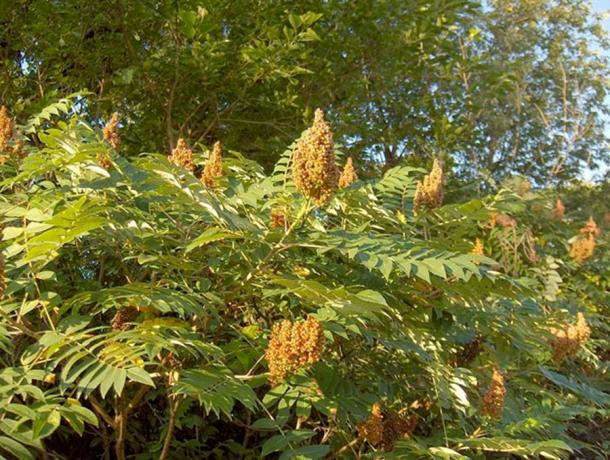
Oldest Evidence of Tobacco Use Found at Ice Age Camp in Utah
Excavations at an Ice Age hunter-gatherer camp in Utah’s Great Salt Lake Desert have revealed the oldest known evidence of tobacco use found so far.
The discovery took place at the Wishbone site and was hidden only a few centimeters below the surface. During their excavations researchers discovered a campground used by the prehistoric hunter-gatherers 12,300 years ago.
The Oldest Evidence of Tobacco Use in North America
The site contains several points of interest including the charred remains of an ancient hearth, a finely crafted spear point, and a collection of tobacco seeds. Archaeologist Daron Duke of Far Western Anthropological Research Group in Henderson, Nev., and colleagues were especially intrigued by the four charred seeds, which they discovered came from wild tobacco plants.
- Experts Discover Hard Evidence that Native Americans were Smoking Tobacco 3000 Years Ago
- Ancient Pipes Reveal What Natives Americans Were Smoking
According to Science News, three of the seeds were radiocarbon dated to approximately 12,300 years old. This makes their discovery the oldest known evidence of tobacco use in North America. The scientists write in their article in Nature Human Behavior that the plants were “gathered on foothills or mountains located 13 kilometers or more from the Wishbone area.”

Burned tobacco seeds found at an archaeological site in Utah, including this seed shown here from multiple angles, date to more than 12,000 years ago. (D. Duke et al/Nature Human Behavior 2021)
Exploring the Wishbone Site
When the site was occupied it would have been part of a marshland and some of the other finds in and around the fireplace are bones of waterfowl such as ducks, a long, intact stone point, another stone point which is broken in two, seeds of various wetland plants, and a bone implement.
The first exploration of the Wishbone site took place in 2015, and in the early stages the team was focused on thousands of acres of a range that had never been explored before. When archaeologists returned in 2016 they focused on an area where they found a collection of over 60 items. Many of the artifacts have provided insight into what hunter-gatherers ate in the Ice Age.
In 2015, Duke also reported a staggering array of more than 1,000 large stone points found at the site. The area contained traces of mammoth residue, providing the first evidence of mammoth hunting in the Great Basin. The tools discovered in the area were also dated back to the Ice Age when the temperature was around 10 – 15 degrees cooler on average than now. However, the most important part of the discovery is the evidence of tobacco use at such an early period in history.

Tobacco seeds. (parinya /Adobe Stock)
How Did the Hunter-Gatherers Use the Tobacco?
Duke says that the researchers are uncertain how exactly the ancient North American hunter-gatherers used the tobacco. It’s possible that tobacco was smoked at the Wishbone site and that people may have twisted tobacco leaves, stems, and other plant fibers into balls and chewed or sucked them, before spitting out or discarding the seeds. Other studies have shown that the ancestors of the Pueblo people were chewing wild tobacco between around 1,000 and 2,000 years ago in what’s now Arizona.
- Lethal Effects of Ancient Tobacco Consumption Identified in the Miscarried Baby of a Shamaness
- Researchers Take a Bite Out of Prehistoric Nicotine Use
The earliest evidence researchers have for the use of domesticated tobacco comes from South America, but it only dates to 8000 years ago. But that doesn’t rule out an earlier domestication date in North America. Duke says that “Certain groups wound up domesticating particular [tobacco] species, typically alongside food crops.”
Ancient Pipe Study Reveals What Native Americans Were Smoking
A 2020 study revealed that Native Americans also smoked plants other than tobacco in their pipes. A multidisciplinary team from Washington University made the discovery while studying a 1430-year-old pipe that was once used by people who inhabited what is now Washington State. They used a new technology known as metabolomics-based analysis, which can provide more data than the traditional biomarker method, and potentially detect thousands of plant residues.
What they found was evidence for the smoking of smooth sumac (Rhus glabra) mixed in with the tobacco. One of the lead researchers, Dr. Korey Brownstein, said “We think the Rhus glabra may have been mixed with tobacco for its medicinal qualities and to improve the flavor of smoke.”

Smooth sumac. (Homer Edward Price/ CC BY 2.0)
Top image: The Storyteller by Martin Pate (Courtesy, Southeast Archeological Center, National Park Service)
Updated on October 15, 2021.















